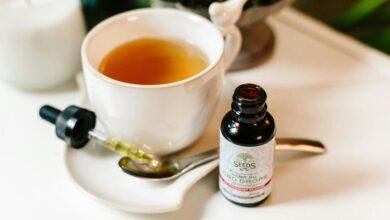What Do the Letters Cbd Stand for

The letters "CBD" refer to cannabidiol, a compound derived from the cannabis plant. Unlike its more famous counterpart, THC, CBD does not produce psychoactive effects. This distinction has led to a growing interest in its potential health benefits, particularly in areas such as anxiety management and inflammation reduction. As the conversation around natural wellness continues to evolve, understanding the nuances of CBD becomes increasingly important. What implications does this have for health and wellness practices?
Understanding Cannabidiol: The Basics of CBD
Cannabidiol, commonly known as CBD, is a non-psychoactive compound derived from the cannabis plant.
Its legality varies by region, influenced by local laws regarding cannabis.
CBD is sourced from both hemp and marijuana varieties of cannabis, with hemp-derived CBD typically being more accessible due to its legal status.
Consumers often seek reliable sources to ensure quality and compliance with regulations.
The Difference Between CBD and THC
CBD and THC are two prominent compounds found in the cannabis plant, each exhibiting distinct properties and effects.
THC is psychoactive, causing a high, while CBD is non-psychoactive, appealing to those with cbd legality concerns.
The ongoing cbd vs. hemp discussion highlights the differences in legality and usage, as hemp-derived CBD is widely accepted, whereas THC remains restricted in many regions.
Potential Health Benefits of CBD
As interest in natural remedies grows, the potential health benefits of CBD have become a focal point for researchers and consumers alike.
CBD research indicates that it may alleviate anxiety, reduce inflammation, and improve sleep quality.
Additionally, preliminary studies suggest its role in managing chronic pain and epilepsy.
As more evidence emerges, the potential health applications of CBD continue to expand.
How to Incorporate CBD Into Your Wellness Routine
How can individuals seamlessly integrate CBD into their daily wellness routines?
Incorporating CBD can be achieved through various methods, including CBD recipes like smoothies or baked goods, allowing for enjoyable consumption.
It's essential to follow dosage guidelines, starting with lower amounts and adjusting based on individual needs.
This approach empowers users to personalize their experience while enhancing overall well-being and freedom in their wellness journey.
Conclusion
In summary, cannabidiol, or CBD, offers a promising pathway to potential wellness and relief. Distinct from its psychoactive counterpart THC, CBD captures considerable attention for its therapeutic traits. As society increasingly seeks soothing solutions, integrating CBD into daily routines may enhance health and harmony. By understanding its benefits and applications, individuals can judiciously navigate the nuanced landscape of natural remedies, ultimately fostering a flourishing and fulfilling lifestyle through informed choices.






